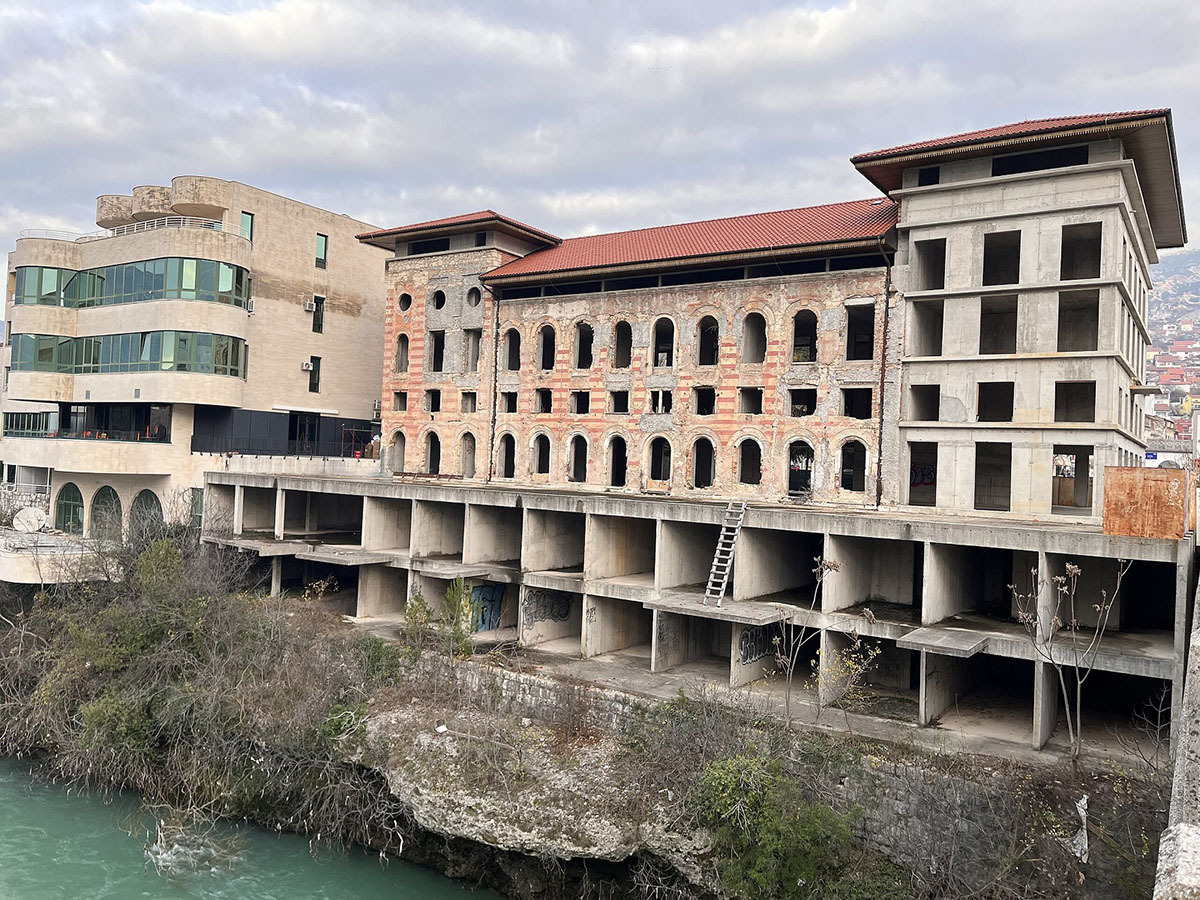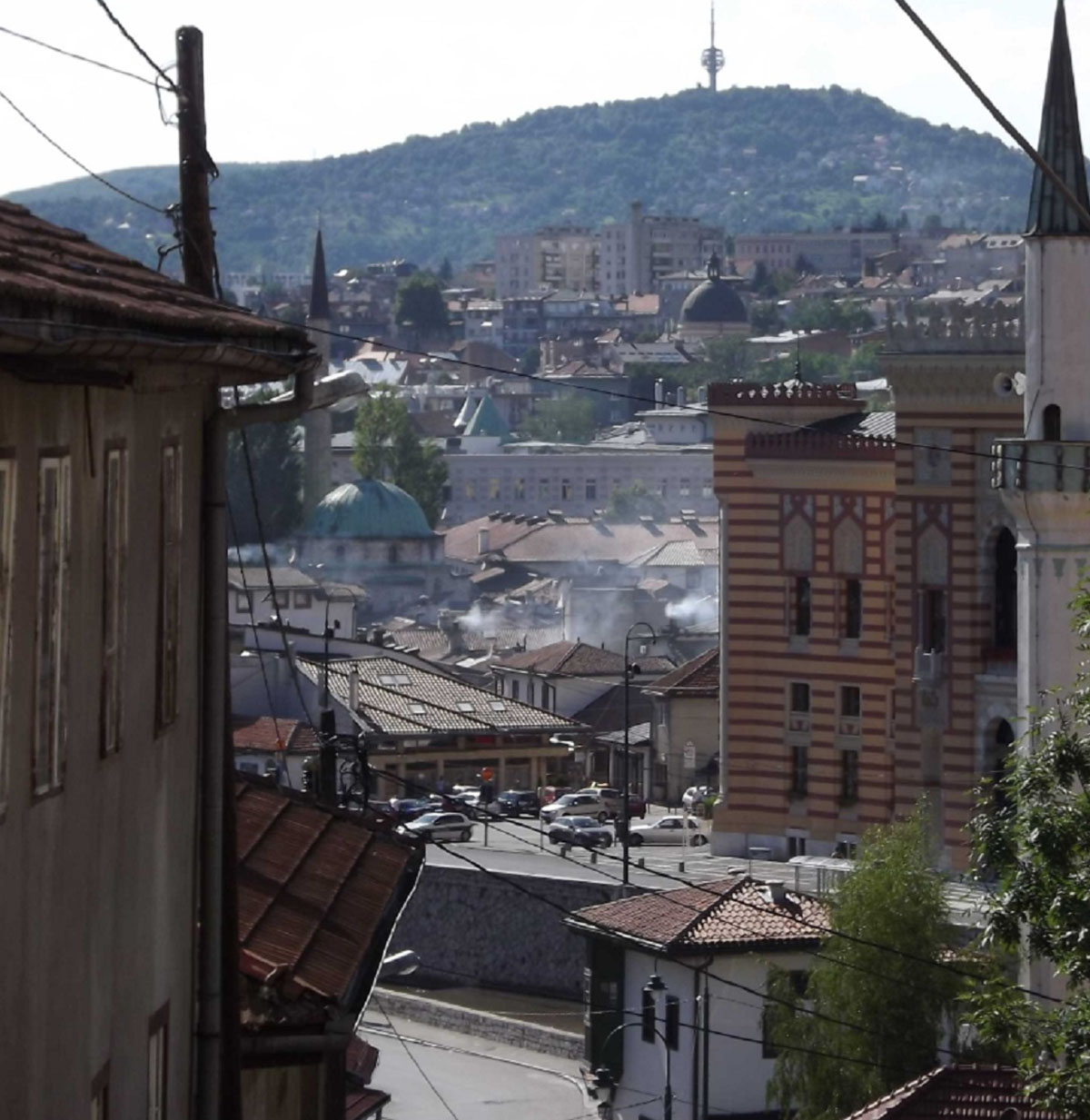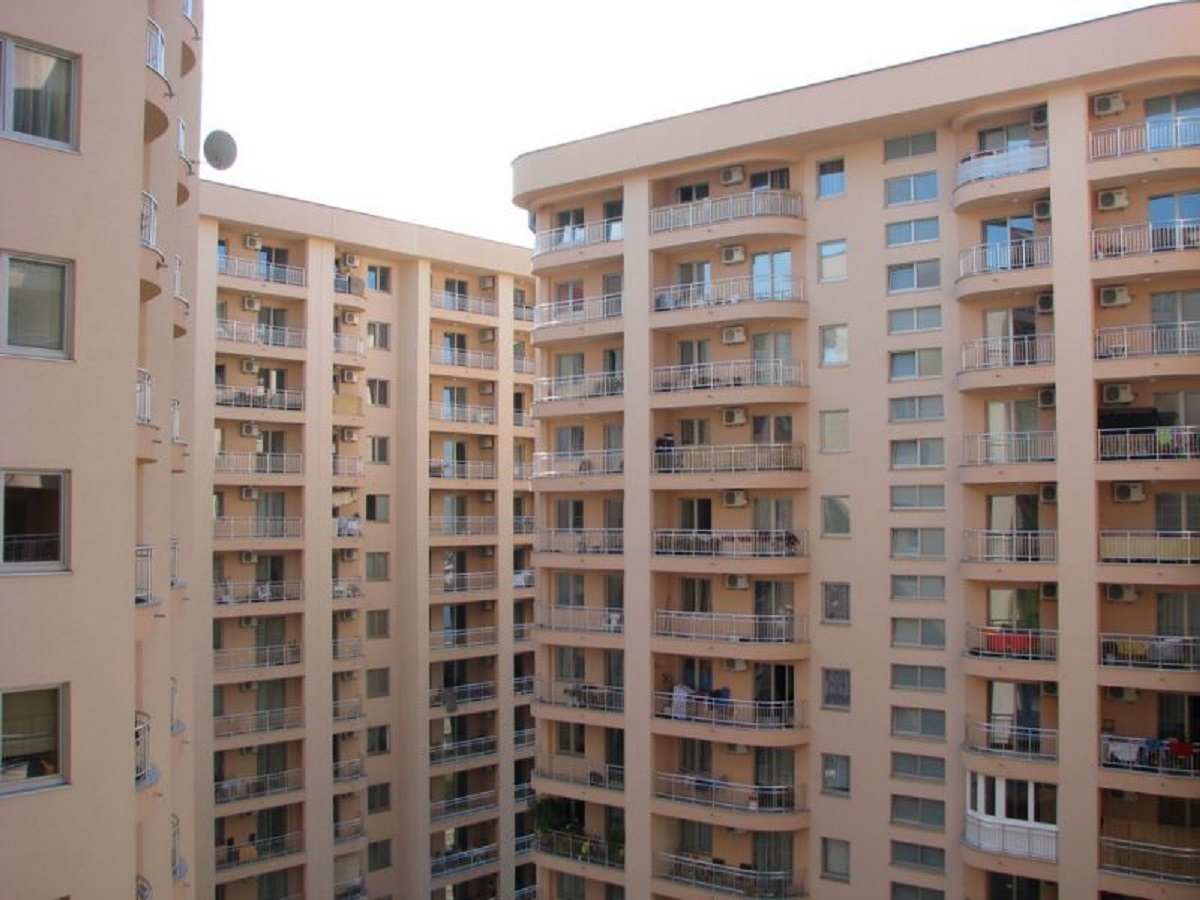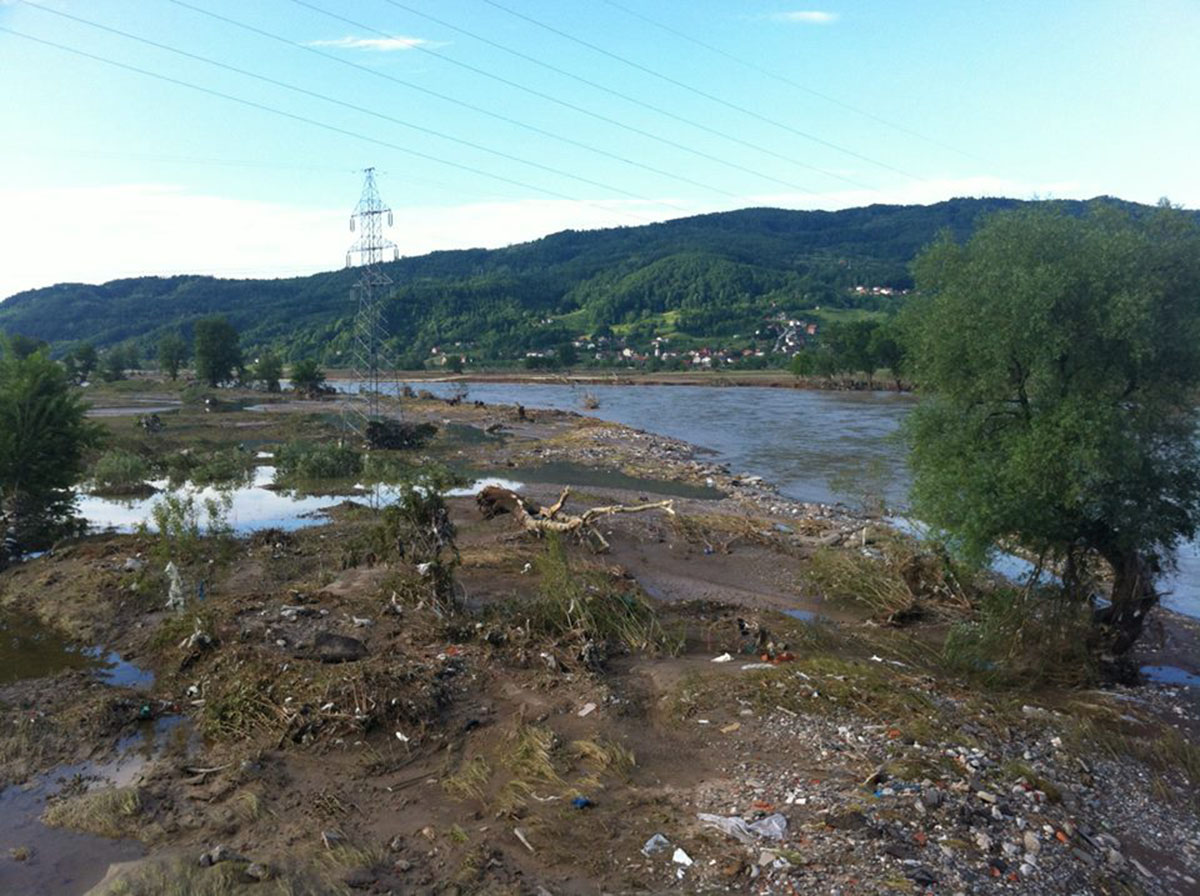Submitted by Emina Čamdžić
Resilient Cities Affected With Natural Disasters And Post - War Reconstruction
Bosnia and Herzegovina Architecture News - Sep 12, 2023 - 10:08 3368 views

This article aims to question and understand the way cities in Bosnia and Herzegovina will feel and respond in the future, analysing the local and global challenges that are affecting a city and its habitants, understanding disaster resilience and reconstruction; both in natural catastrophes such as are floods, but in post - war environment too. Without even thinking much about, it is understandable that the rapid population growth equals that more and more people are living in cities. Currently 55% of the world's population lives in urban areas, the percentage which according to data on this page1, will grow to 68% by 2050. Changes are taking place at several levels, at the level of mega - cities and small urban town areas. These changes affect economic development, housing, public health and public transportation. Additionally, more about these themes find out in this previous article page about energy poverty and article page on green urban planning, published by WAC's Bosnia and Herzegovina Country Reporter Emina Čamdžić.
Top image is of the Hotel Neretva building in Mostar, and shows post - war reconstruction with conservation and restoration of the façade, partial reconstruction of the building such as walls and the whole roof, with extension, which is supposed according to news to be the next Hilton hotel. Another building site where is according to news going to be built the next Hilton hotel in central Sarajevo is mentioned in this article on the link about rebuilding and reconstruction.
What will a city look like in the years to come and is there a best model to promote? With the technological revolution, Internet, mass migration and movement of people, cities and towns will need to change too.
Changes are taking place at the pace that was almost unimaginable just a few decades ago. People are changing, lives are changing, and therefore it is obvious that habitats need to change as well, implying that cities need to adjust to this change. Unfortunately, with climate change and everything happening in the world, post - conflict and post - natural disaster environments are not uncommon.
Architects and urban planners have an important role to play as promoters of responsible cities and change - makers of a place.
WAC's Bosnia and Herzegovina Country Reporter, architect Emina Čamdžić shares that there are several observations to share from a perspective of a post - conflict environment. In fact, Bosnia and Herzegovina has been in the process of post - conflict environment since 1995. The changes that have been taking place have affected every layer of the society, including the changes in the way that building and rebuilding has taken place.

Image shows the town of Sarajevo with its hills and buildings, at the corner of Bascarsija - Old town with Vijecnica - City Hall building. Image © Eminent. [Outlet/ Platform]
1) The first observation is about the fast rise of ad - hoc buildings in Bosnian cities and towns like Sarajevo, Tuzla, Srebrenik, Visegrad and Mostar which has had a huge impact on the way these cities and towns both look and feel. These were part of the reconstruction in post - war environment, and often driven by speed and undermined by the lack of urban planning; with the desire for a quick - impact reconstruction; and the prioritization of cheap and fast building over sustainable development of urban areas. The faces of the cities and towns have changed beyond recognition in Bosnia and Herzegovina. In most cases, this is not for better.
Urban development is a reflection of the state politics and local politics and as well as the level of influence they have on urban planning departments. The results of post - war urban planning department’s work are visible, their choices are often painful for a city.
But it is down to the current new generations to make the choices and try both repair the damage inflicted by the war and the damage inflicted by the lack of proper urban planning.
While the ugly and unnatural has been built and it will stay there, beautiful and natural can still happen through creating better surroundings.
Not only pleasant to look at but healthy to live too.
Meanwhile, Sarajevo as a capital of Bosnia and Herzegovina is holding the title of one of the most polluted cities in Europe. Shouldn’t buildings be used as an alleviator of this problem, rather than a contributor to it. About the influence of clean breathing air quality and sustainability in design, read on to learn more in this article published by WAC's Bosnia and Herzegovina Country Reporter, architect Emina Čamdžić.
WAC's Bosnia and Herzegovina Country Reporter, architect Emina Čamdžić understands that this problem directly or indirectly affects some other issues such as health and education. Therefore, design and building in potential flooding zones would help the residents feel safer and strengthen the economy and development of these towns. Ad - hoc projects are a wrong way of building and should not be a following example of the way building has been done in post - war Bosnia and Herzegovina.
 Image shows building developments in the Sarajevo suburb. Image © Sarajevo.co.ba2 (CCA-SA 4.0)
Image shows building developments in the Sarajevo suburb. Image © Sarajevo.co.ba2 (CCA-SA 4.0)
Shouldn’t Sarajevo be a city of people, rather than a city of buildings that reflect an era of the lack of direction and urban planning? Should the city be healthy, have healthy air to breathe, healthy spaces to reside and work in? Should the city not be a magnet not only for the young people to stay to live and work in it, but as well a city that invites visitors. Resilient? Should cities be resilient? How can they be resilient and what does this mean?
2) Another observation by WAC's Bosnia and Herzegovina Country Reporter, architect Emina Čamdžić explains that cities and towns consist of a built and natural environment. Natural catastrophes represent one of the biggest challenges of the 21st century and climate change contributes it. This is no longer a problem of a particular country or continent, but a global one that impacts everyone and everywhere. Unfortunately, building and reconstruction in potentially flooding areas is often driven by a short termism of quick building over a sustainable development or desire for a quick - impact reconstruction.

Image shows devastations of the agricultural fields around Doboj. Image © Dalibor Platenik – Dali3 via Wikimedia Commons (CC-BY-3.0)
How big the challenge of tackling environmental changes is, is well recognized in the COP 21 agreement4 signed by 195 nations in Paris in December 2015 to combat the effects of climate change towards a sustainable future. Read on more on the theme of COP 26 conference on climate change mentioned on this page, published by World Architecture Community's Bosnia and Herzegovina Country Reporter Emina Čamdžić.
The image shows the flooding area around Doboj where agricultural fields were flooded during the May 2014 floods. In fact, in May 2014 Bosnia and Herzegovina was affected by large scale floods. Towns like Doboj, Srebrenik, Maglaj as well as Banja Luka and Tesanj, suffered as the consequence of the lack of proper design. Although Bosnia and Herzegovina experienced war and destruction, seems to have forgotten how important it is to build properly and resiliently.
Questions like: What to build; where to leave and is a long term plan needed are rarely raised? How will the previously mentioned cities be looking like in 20, 50 or 100 years? Are the buildings sustainable or not and what can architects and planners who are living there do about it? How can architects make impact and bring change? What will happen if again floods happens in the Danube region in Germany, Czech Republic or if river Sava and their tributaries overflow? What is it actually that wants to be achieved when rebuilding a city damaged by war or natural catastrophe? Arguing that it should mean to revive a city, and to rebuild it in such a way that what is built would help heal the wounds of the past and to look forward to the future and encourage people to embrace Bosnia and Herzegovina and not keep abandoning it.
Through examples of cities and towns such as Sarajevo, Srebrenik, Maglaj, Tuzla, Doboj or Banja Luka, but as well globally looking on well - known cities of Singapore, Dubai, Beijing and Helsinki, and the comparison of the environment, it's possible to look further, find solutions on common challenges and help work on ensuring better resilience for towns.
Is the answer perhaps in buildings that provide energy instead of using it? As do living organisms, so should habitats be more like people, breathe, live and transmit energy - not just use it. During research of building design through projects and aforementioned articles published by World Architecture Community, is visible the importance of sustainable design and what materials architects choose to use, then whether the building is energy efficient, responsible and resilient matters.
Therefore, urban planning, where the emphasis on sustainability, electricity and public transport is one of the key factors of sustainable and successful urbanization. Examples of action and responsible building have started to see the light of the day.
Top image is of the Hotel Neretva building post-war reconstruction with conservation and restoration of the façade, partial reconstruction of the building in Mostar. Image by Niegodzisie. Retrieved 28 August, 2023 from (https://commons.wikimedia.org/wiki/File:Ruin_in_Mostar_2022.jpg) via Wikimedia Commons (CC-BY-SA-4.0). Copy-Paste into your browser.
- Website with World Cities Report 2022 by UN Habitat. Retrieved 12 September, 2023 (https://unhabitat.org/wcr/). Copy-Paste into your browser.
- Image shows building developments in the Sarajevo suburb. Image via Sarajevo.co.ba. Retrieved 12 September, 2023 (https://sarajevo.co.ba/naselja-tibra-u-sarajevu-je-uzasno-mjesto/). Copy-Paste into your browser.
- Image shows devastations of the agricultural fields around Doboj. Image by Dalibor Platenik – Dali. Retrieved 12 September, 2023 from (https://commons.wikimedia.org/wiki/File:Floods_in_Bosnia_Doboj.jpg) via Wikimedia Commons (CC-BY-3.0). Copy-Paste into your browser.
- The COP21 Paris Agreement. Retrieved 12 September, 2023 from (https://unfccc.int/process-and-meetings/the-paris-agreement). Copy-Paste into your browser.
Climate change climate crisis natural disasters reconstruction resilient cities
